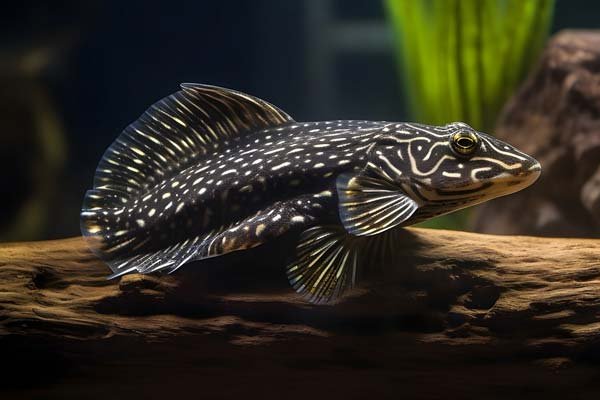
Imagine you’re caring for a new pet; you want to know their needs, habits, and lifespan. Just as we check the lifespan of dogs or cats, understanding the lifespan of your Plecostomus is key to providing a long, healthy life. In this article, we’ll dive into the factors that affect their lifespan, what you can do to promote health, and some tips for keeping your Pleco happy.
Understanding Plecostomus Lifespan
The average lifespan of a Plecostomus in captivity is generally around 10 to 15 years. However, some can live even longer—up to 20 years—if they’re well cared for. That’s quite impressive for a fish! To put it in perspective, think about how long you might expect a hamster or a guinea pig to live, and you’ll see that Plecos are pretty extraordinary.
Lifespan can depend on a variety of factors. Just like humans, some Plecos are simply hardier than others. Their genetics, environment, and the care they receive all play significant roles. It’s a bit like a recipe: the right ingredients lead to a longer, happier life.
Factors Affecting Lifespan
Several key factors can impact how long a Plecostomus lives:
- Tank Size: A common rule of thumb is to provide at least a 75-gallon tank for one adult Pleco. A larger tank allows for better water quality and more space to swim, which can lead to a healthier fish.
- Water Quality: Keeping the water clean is crucial. Regularly testing pH, ammonia, and nitrate levels can help maintain a stable environment. Frequent water changes aid in removing toxins that could harm your Pleco.
- Diet: A balanced diet is essential, too. Plecos are primarily herbivores, so feeding them algae wafers, vegetables, and occasional protein sources can ensure their health and longevity.
Each of these factors contributes to the overall well-being of your Plecostomus. Think of your fish as a tiny ecosystem—everything needs to work together for it to thrive.
Creating a Healthy Environment
To help your Plecostomus flourish, set up their home thoughtfully.
First, choose the right tank. Plecos are social creatures, so it’s beneficial to include tank mates that share similar water conditions. Be mindful of the size of your tank, as these fish can grow quite large, sometimes reaching over a foot long!
Water conditions are another crucial aspect. Aim for a temperature between 74°F and 78°F, with a pH level between 6.5 and 7.5. Installing a reliable filtration system helps maintain clean and well-oxygenated water, which is essential for your Pleco’s health.
Finally, don’t forget about décor! Plecos love to hide, so include plenty of hiding spots, like caves or driftwood, to make them feel secure. A stressed fish is less likely to thrive, and that can ultimately affect their lifespan.
Feeding Your Plecostomus for Longevity
Feeding your Plecostomus a well-rounded diet is like baking a cake—every ingredient matters! Here’s what you should include:
- Algae Wafers: These are perfect for providing the nutrients your Pleco needs to thrive.
- Fresh Vegetables: Slice up zucchini, cucumber, or spinach for a tasty treat. Just remember to remove uneaten veggies after a few hours to keep the tank clean.
- Occasional Protein: While Plecos are primarily herbivores, they can benefit from occasional protein, such as bloodworms or shrimp pellets.
Remember to feed them in small amounts, and observe how much they eat. Overfeeding can lead to health issues and poor water quality, so moderation is vital.
Common Health Issues Impacting Lifespan
Like any other pet, Plecostomus can face health challenges. If you’re a new owner, keep an eye out for these common issues:
- Ich (White Spot Disease): This is often caused by stress. It presents as small white spots on the fish’s body. Quick treatment can save your Pleco.
- Fin Rot: Poor water quality can lead to fin rot, which appears as ragged fins. Regular tank maintenance can help prevent this.
- Swim Bladder Disorder: This can affect a fish’s ability to float or swim correctly. In many cases, it’s due to overfeeding or poor diet.
If you notice any symptoms, it’s best to consult with an aquatic veterinarian. Early intervention can make a huge difference in your Pleco’s health and longevity.
Tips for Extending Your Plecostomus’s Lifespan
Here are some simple tips that can help keep your Plecostomus living its best life:
- Regular Water Changes: Changing out about 10-20% of the water weekly helps maintain a healthy environment.
- Monitor Behavior: Keep an eye on your Pleco’s activity levels. If they seem less active or are hiding more than usual, it might be time to check water quality.
- Maintain Tankmates: Choose peaceful tank mates to avoid stress. Too much aggression can lead to problems.
By following these tips, you can create a harmonious environment, keeping your Plecostomus happy for many years.
In conclusion, the lifespan of your Plecostomus can range from 10 to 20 years, depending on factors like tank size, water quality, and diet. By providing a healthy environment and proper care, you can help ensure your Pleco lives a long, fulfilling life. Remember, every little thing matters—just like nurturing a friendship, the love and effort you put into caring for your Plecostomus will pay off in long-lasting companionship. So, let’s make this aquatic journey an adventure full of joy and learning together!
